"Summits On The Air" with W7MRC, Amateur Radio, Rhodesian Ridgebacks, Field Craft, Living in Montana, Old 4 Wheel Drivers, Mountain Bikes, Hiking and "Just Getting There"
Friday, August 24, 2018
Wednesday, August 22, 2018
Why the Future Is Arriving Faster Than You Think
Why the Future Is Arriving Faster Than You Think: More people are sharing more knowledge, at faster speeds and lower costs, than ever before, and we'll see even more growth and acceleration going forward.
Landmark FDA Approval Brings Powerful Gene Silencing Method to Market
Landmark FDA Approval Brings Powerful Gene Silencing Method to Market: With other RNA-based gene silencing therapies hurtling down pipeline, it’s likely we’ll be seeing more of these drugs soon. Here’s what you need to know.
HOW THE ISRAELI DEFENSE FORCES FIGHT HAMAS By Justen Charters
Hamas, founded in 1987 by Ahmad Yassin, is a foreign terrorist group that was formed during the first intifada against Israel. Yassin, a radical Sunni spiritual leader, created Hamas during the unrest in Gaza to emphasize the Islamist aims of the Muslim Brotherhood.
Today, the Sunni extremist group continues to lob rockets at civilian targets from across the border, uses children as human shields, and supports the completeannihilation of Israel. In fact, Hamas recently found itself in the headlines after 50 of its members were killed by Israeli Defense Forces (IDF) during demonstrations in Gaza, according to CNN.

IDF Major Amichai Chikli intimately understands what it’s like to go head-to-head with the militant Sunni-Islamists.
Chikli served in the IDF for eight years, including time as a member of special forces in a guerilla reconnaissance unit. During his time in the unit, Hamas was just beginning to build tunnels to transport their jihadists and weapons into Israel.
Intelligence from the Israel Security Agency (Shabak) discovered that Hamas had what they suspected was a tunnel in the Shuja’iyya neighborhood, a major sanctuary for the terrorist group.
“It was around Hanukkah,” Chikli said. “Shabak was watching Hamas. They saw them taking bags of sand out of a chicken coop and putting them into a truck. Of course, that raised suspicion.”

Chikli was tasked with leading his small platoon along with another to destroy the tunnel.
“We crossed the fence into Shuja’iyya,” he said. “Thermal imaging from the drone up above told us that there were people next to the chicken coop and that they were awake and alert, so we moved slowly. My mission was to surround the perimeter of chicken coop as the other platoon went inside to investigate things further.”
Chikli continued, sharing what he heard over his radio as the platoon moved in: “When they reached the first chicken coop, they didn’t find anything but sleeping chickens, so they continued to move forward.”
The next chicken coop was anything but a home for feathery birds. “The second chicken coop was empty,” Chikli recalled. “Before the platoon went in, they sent in a dog and his handler to check for explosives.” The handler wasn’t certain that a tunnel was in the coop, though.

There were a series of barriers obstructing his view. “He didn’t see anything, so we sent in the platoon. They went inside and moved around the panels to see better. Then they saw a camera with a small light. Over my radio, I could hear the platoon commander ordering everyone to get out of the chicken coop."
But it was too late. Two seconds later, there was a massive explosion.
“It was raining iron, stones, and debris,” Chikli said. “I thought I was going to die because I’d been hit with a piece of iron falling from the sky. You couldn’t hear anything.”
Chikli expected that the entire platoon was dead, but luckily he was wrong.
“The bomb that went off wasn’t designed to bring down a building; it was the type that a terrorist would use to destroy an armored vehicle, not infantry. Their weapons had been ripped from their hands, their helmets and night vision were gone, but they weren’t dead,” Chikli said.

However, they were still in a hostile area, so there wasn’t time to take in the moment of what had just happened.
“The platoon immediately gathered. We wanted to make sure that all was okay. It took about 10 minutes to find out where everyone was. All were accounted for except the handler and the dog. Our new mission was to find them and quickly. After the commander gave us our new order, you could hear massive gunfire. It was Hamas,” Chikli recounted.
“Three Hamas militants were coming out of a tunnel and started to shoot at us. They were sure that the entire company was wounded on the floor, so they expected us to be easy to kill. Finding the handler and the dog would have to wait.”
The platoons took cover behind a wall that was part of the chicken coop but hadn’t been turned to rubble in the explosion. Only one person was badly injured, according to Chikli.
“Our radioman of the commander of the unit received two bullets to his weapon. It exploded, hit his face and opened it,” he said. That presented a new challenge for Chikli and his men. They needed to get their brother-in-arms medical attention for his severe injury and still take out the terrorists in the process. “About five minutes into the battle, all of the militants were dead.”
With the platoon mostly accounted for and the immediate threat neutralized, the mission returned to finding the handler and the dog. “We found them lying on the ground,” Chikli said. “I checked the pulse of the handler. He was dead. That’s what it’s like to fight Hamas.”
Chikli now serves in the reserves of the IDF and as a teacher at an Israeli academy for military officers. To this day, he considers Hamas an evil organization due to the constant threat from their attacks on Israelis.
“They are blinded by hatred,” he said. “Blinded.”
15 Years of Overlanding the World without Killing Each Other – How Do We Do It? By Karin-Marijke Vis
“Sorry to interrupt. Coen, on the bed are clean socks, underwear, and a shirt. The shower is all yours,” I said as I walked into the living room of our friend’s home in Bolivia. Coen and our host Willy were having a discussion while I had been doing chores and had just finished taking a shower. Two pairs of eyes turned my way, Coen’s neutral, but Willy’s eyes opened as she fell silent.
“Did I hear what I just heard?” she asked.
“What?”
“You decide which clothes he wears? You pick his underwear?!”
“Of course. I always do.”
Her eyes grew wider, which made me reflect on our exchange for a moment. I laughed. “Well, yes, that does sound odd, doesn’t it?”
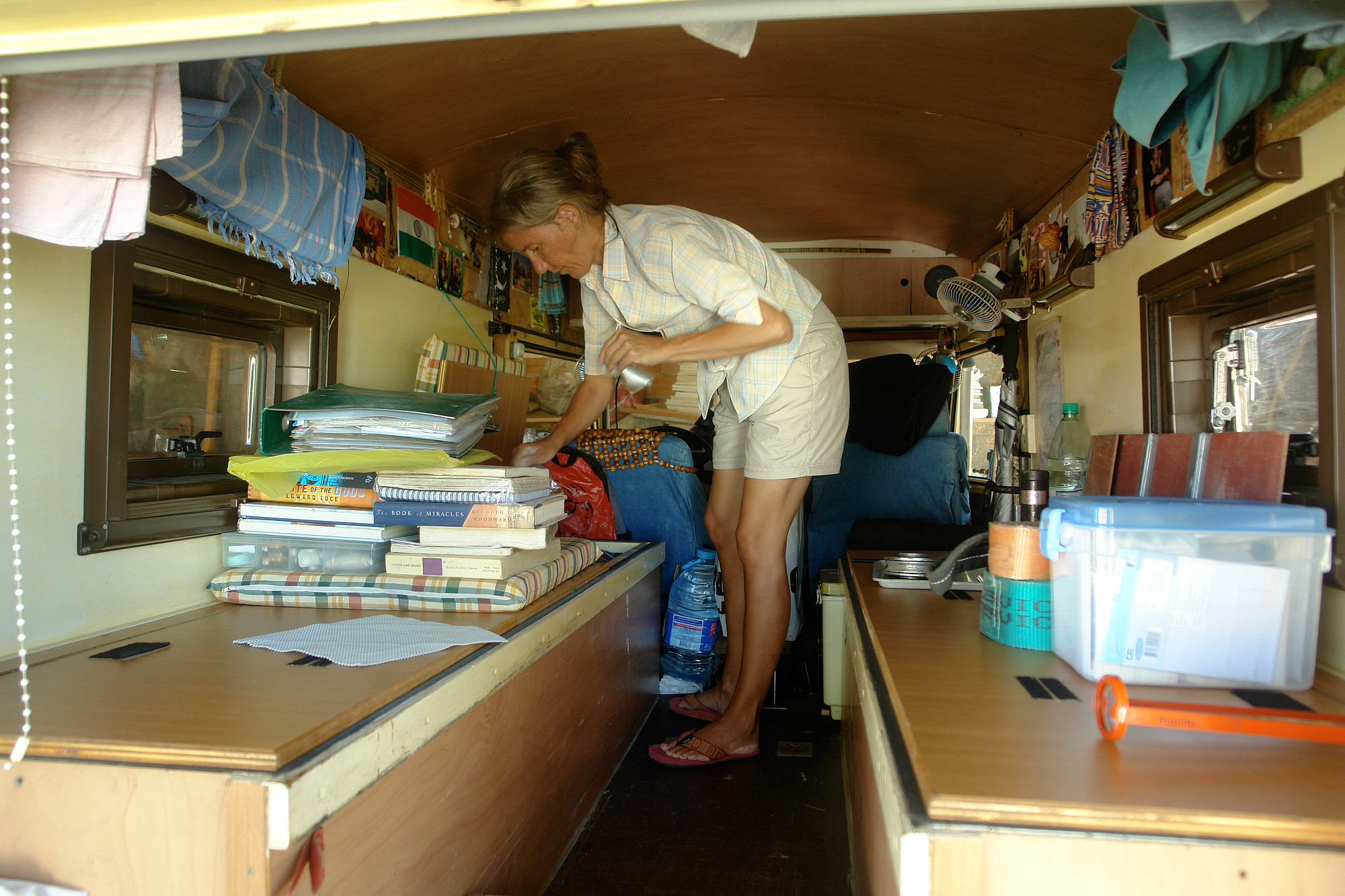
From the beginning of our trip, I have dug up clothes for both of us from one of the storage compartments. Just as I dig up anything else that is in those compartments. Small and agile, I move around with much more ease in the back of the Land Cruiser than Coen. Initially, I may have asked what he wanted to wear and too often he may have answered “It doesn’t matter,” so I stopped asking. I can’t remember. We do know it has never been an issue. In Willy’s home, we discussed our division of labor and I realized that ours is about the most traditional imaginable. What a world of difference from the time I lived with my ex-partner with whom I fought forever about who was to clean the toilet, with me mostly starting those discussions and ranting about how we should share the household chores.
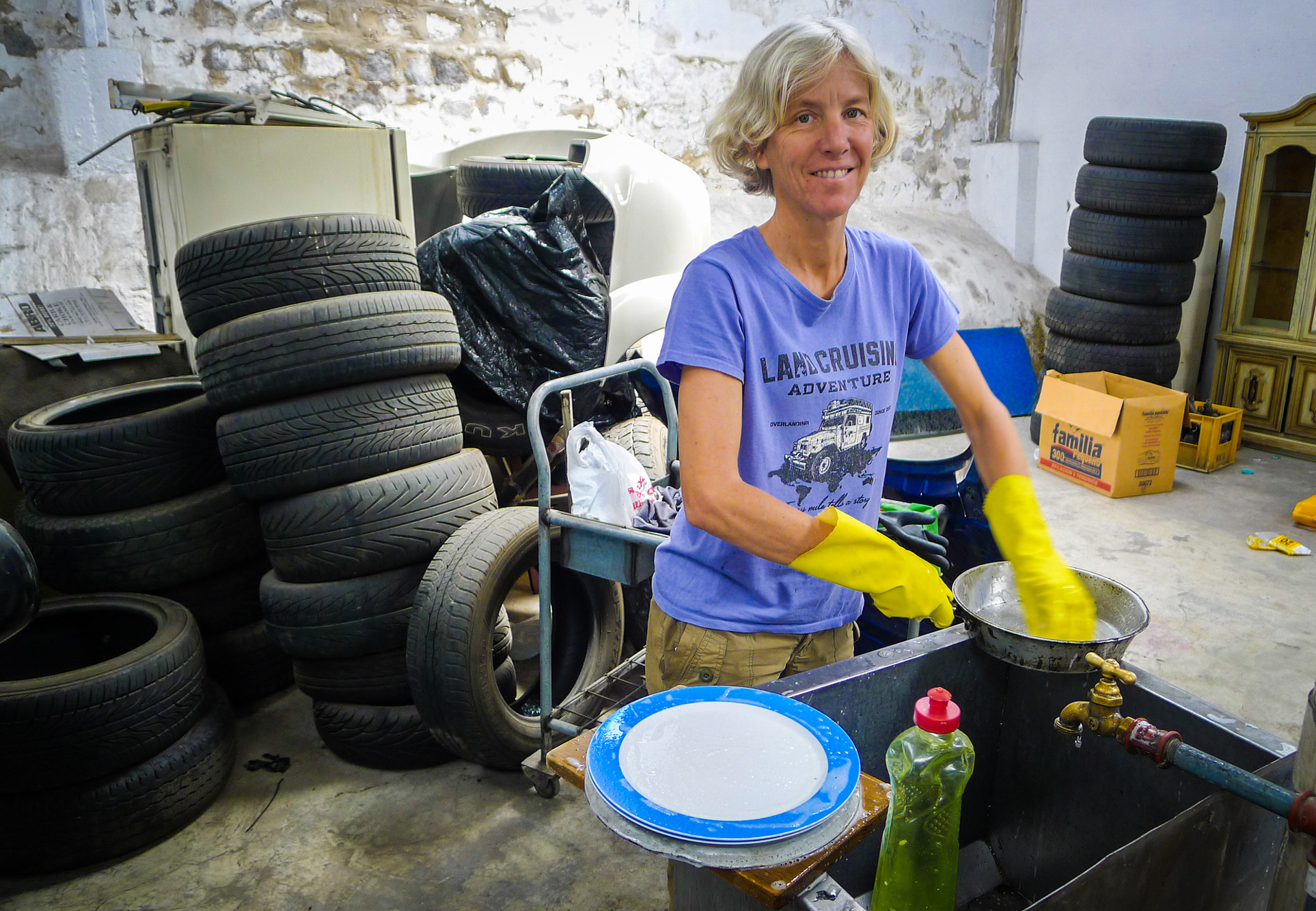
During our 15 years on the road, I have done most of the laundry, most of the dishes, as well as all the cleaning and organization of the Land Cruiser’s bowels. Cooking is one of the few tasks we have often shared; the task has never “belonged” to either of us. Over the years people have remarked on this female side of our division of labor. However, interestingly, nobody has ever has remarked, “Really? You don’t fix the car? Coen always has to do that?!” Apparently, the fact that he, the man on the team, takes care of mechanical issues is a given. And, in our case, it’s true. I have never fixed the Land Cruiser. I have not even changed a tire (I do dig up the tools and put them away again). This has always been Coen’s job, just like taking care of bureaucratic rigmaroles, organizing visas, and car papers.
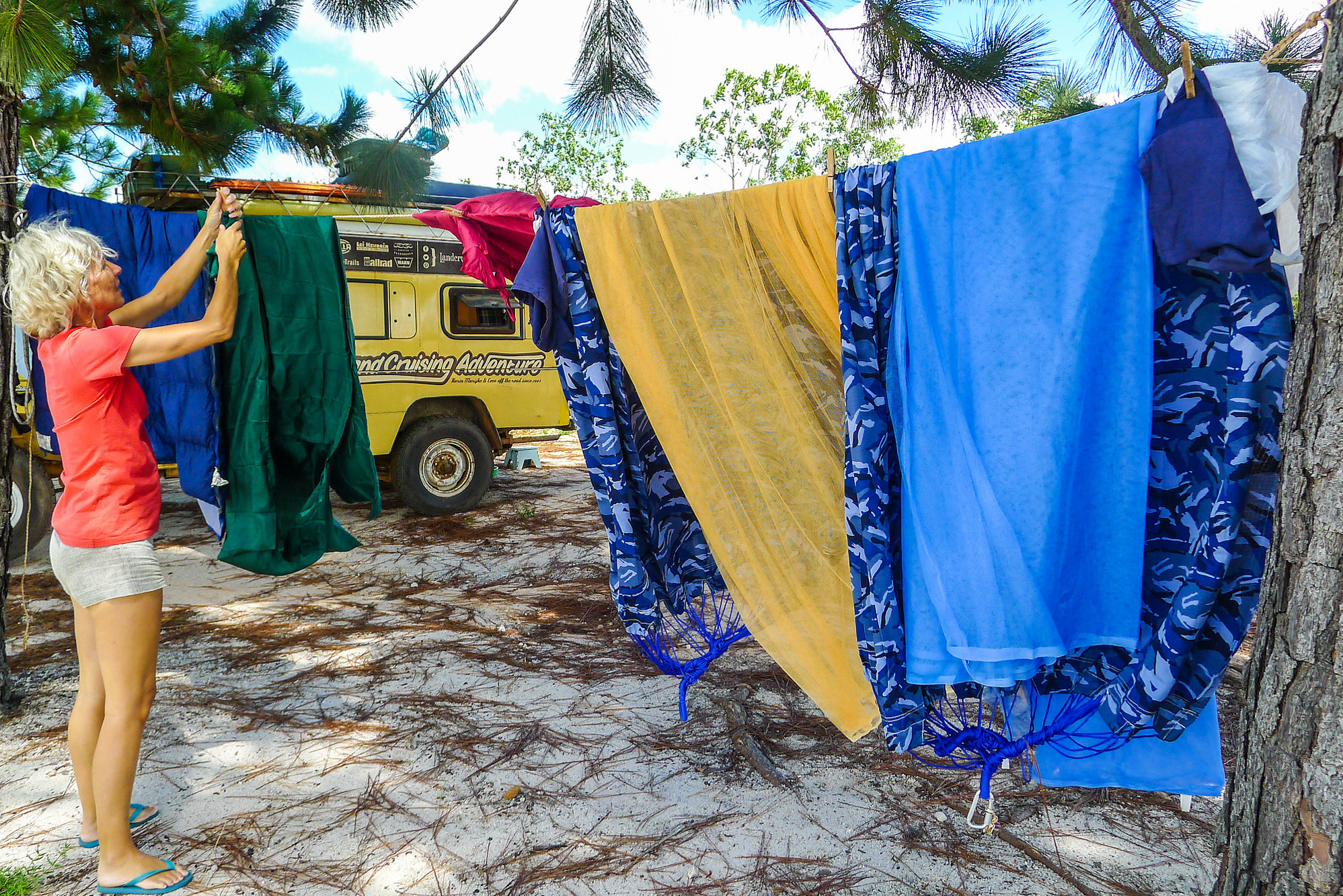
This story is not about how things should be done by anybody. Are you a couple that loves sharing everything? Great! Are you a couple where the woman prods into the car’s engine and hubs and the man does the laundry? Fantastic. This story is about how Coen and I have lived together 24/7 for the past 15 years in and around a Land Cruiser without killing each other and—most of the time—in harmony. If you are struggling to find that harmony on the road, maybe you’ll find something useful here worth giving a try.
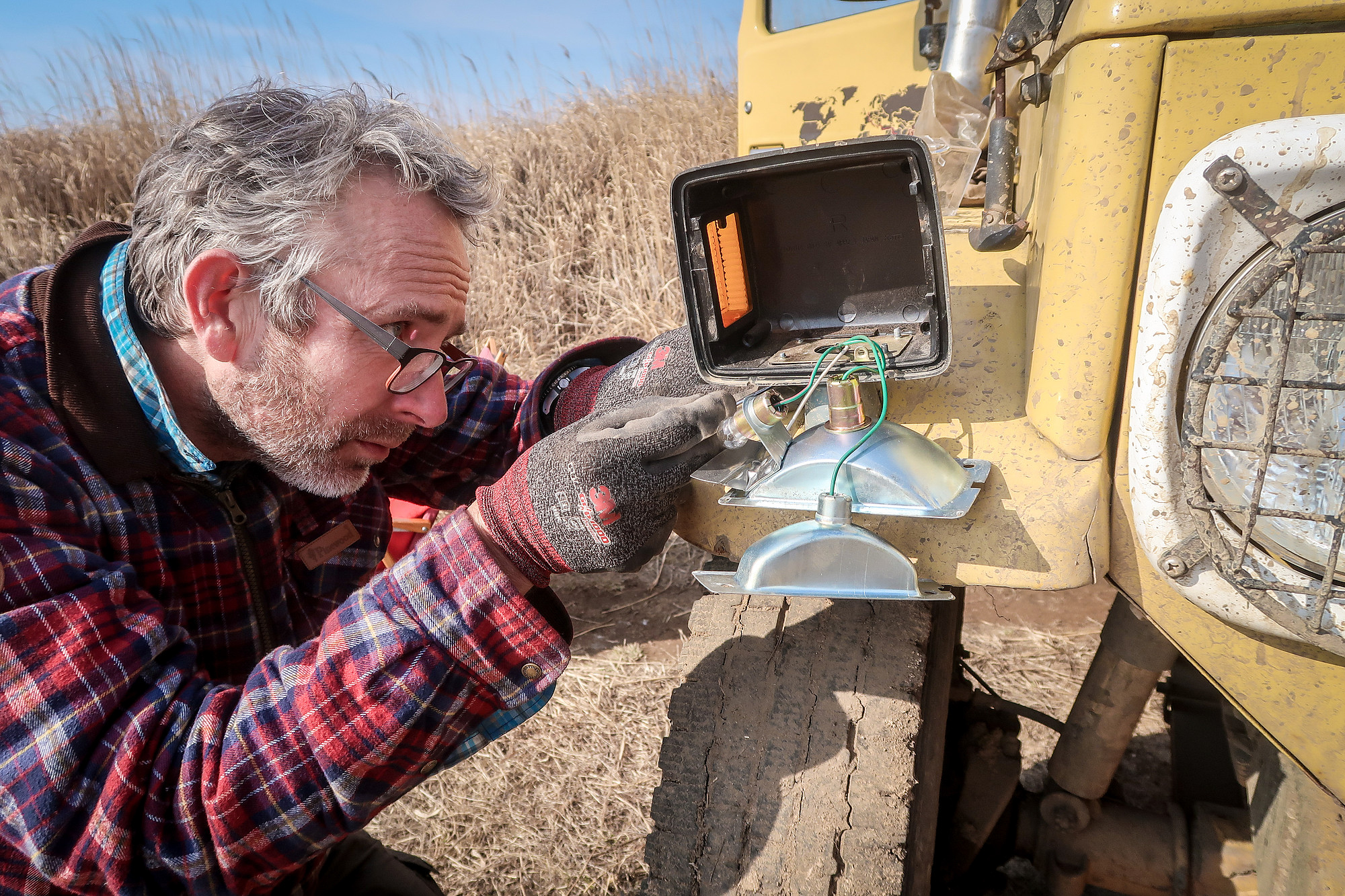
Despite having these tips incorporated into our own relationship, it doesn’t mean we never screw up. We do. We fight, we argue. And that’s okay. Life isn’t meant to be always good, perfect, easy, and fine. Struggles, disappointments, pain, and grief are all part of life. Some of these things we can influence, others we don’t. Living together 24/7 in and around a car is no small feat and a long overland journey is not a holiday. Finding the right balance is key.
Let’s take a look at what we’ve learned over the years.
1. Create personal space.
Tip: If you feel you don’t have enough time for yourself, divide your tasks. It doesn’t matter how, just search for a way that feels good for both of you.
Our division of labor is about creating personal space. About not sharing every single action or even having to discuss them, as in, “Will you do this, while I do that.” Of course, we help each other and situations aren’t always as black and white as I state them here.
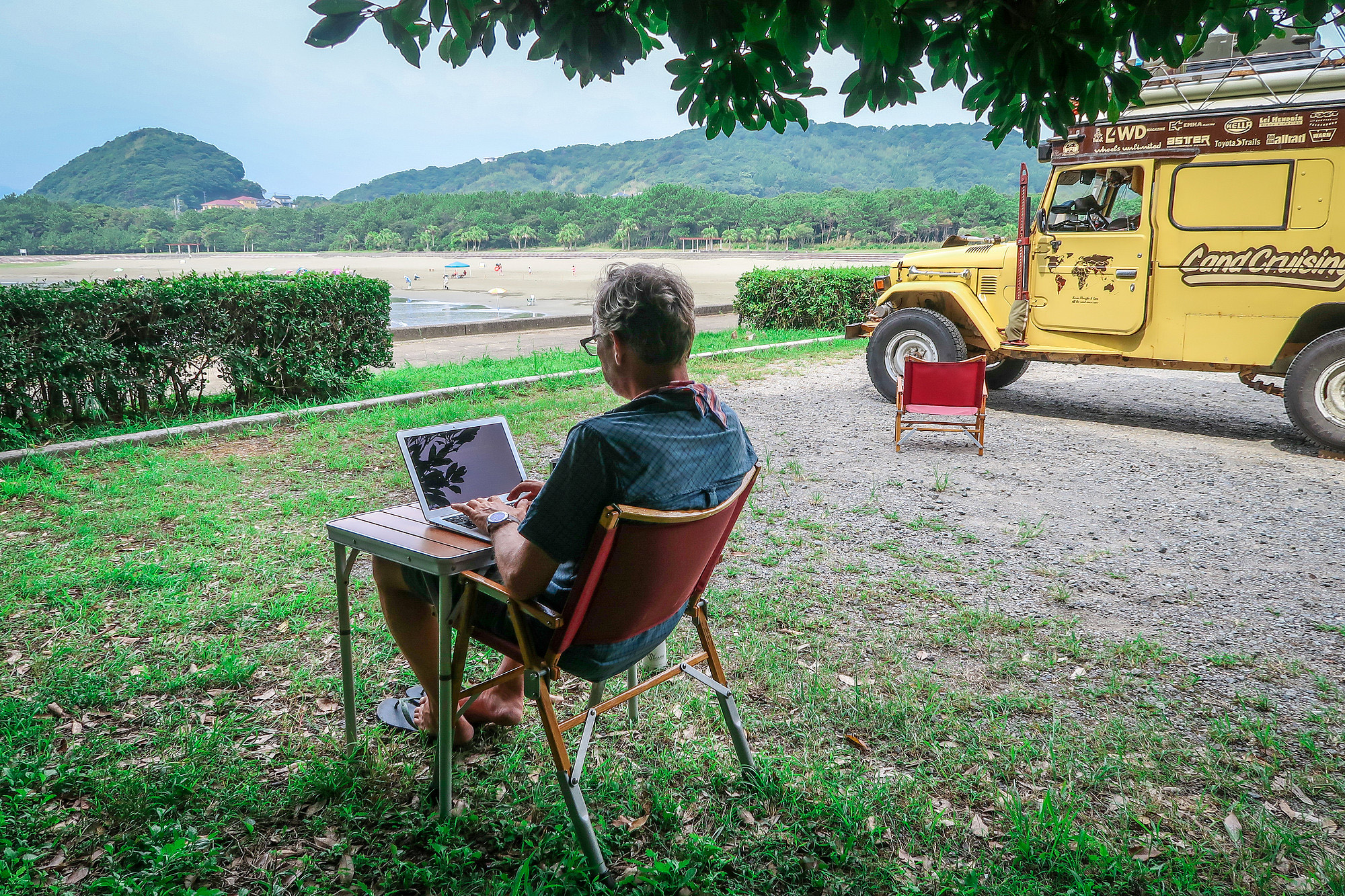

We share so much already, the whole journey, our work as freelancers, and therefore it’s a necessity to do some things alone as well. In most relationships, you’ll automatically have a form of personal space, time away from your spouse because of your work, sports club, friends. This often takes you physically away from each other for hours (or longer) at a time. We don’t have that except for the days that Coen goes to workshops and I do my own thing elsewhere. By creating our own domains within our small world, we create a form of personal space.
2. Allow for outbursts and do not take them personally.
Tip: Acknowledge that, in most cases, there is nobody else to run down when the going gets tough and things go pear-shaped.
During our 1.5 years in Pakistan, India, and Bangladesh we were regularly at each other’s throats. When the words “you ALWAYS” and “you NEVER” become part of the explosion, realize it’s not about you. The other person is stressed out. In the tropical heat of the subcontinent, forever surrounded by a massive number of local people demanding our attention, and amidst the most maddening and life-threatening traffic in the world (above which hovered guardian angels to save our lives) these were exhausting countries to travel in. On the subcontinent, we argued like nowhere else.
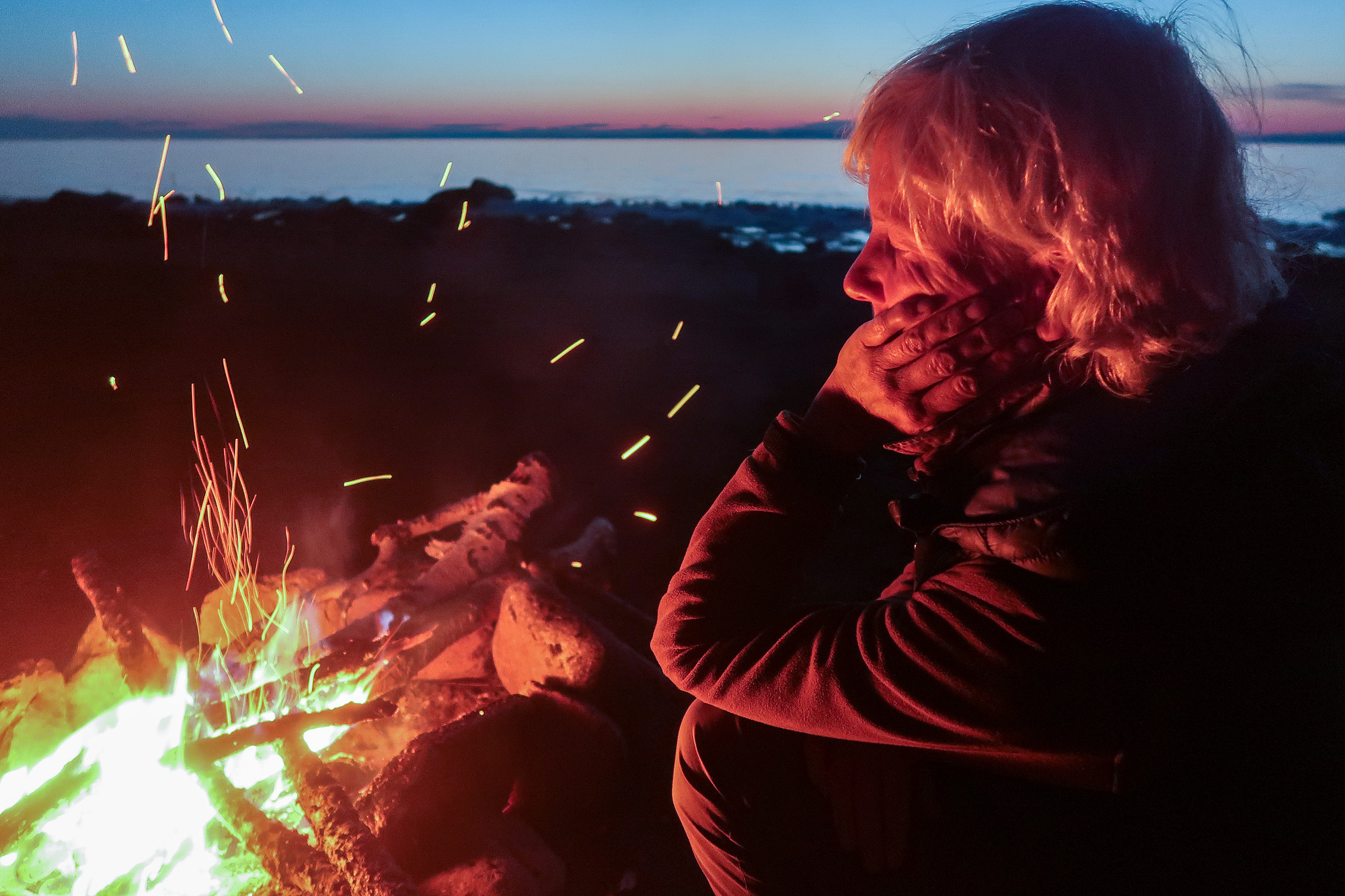
The tricky part about living together 24 hours a day, on and around a surface of about 90 square feet, is the absence of escape. We can’t get away and take refuge in a friend’s house, our jobs, or a sports club. Without friends around to complain to, we have only each other to run down. It results in tempers rising quickly and high, with emotions direct and intense. This has a positive side as well. Most of our irritations are settled rapidly, as there are no deep underlying emotions or hard feelings that need to be talked about or analyzed.
3. Embrace each other’s differences.
Tip: Use each other’s characteristics to advantage on your journey.
Coen is an extrovert and bold; I am an introvert and (often) shy. This means Coen enjoys talking to everybody, all the time. I like talking to people as well but not always—I also need time to retire into my own world with or without a book.
Coen likes to be in control and so it suits us both that he negotiates deals, works his way through bureaucratic hierarchies to achieve seemingly impossible things (like a one-year visa for India, or car papers for Venezuela after two weeks of having obstacles thrown in our faces by the officials). On the other hand, my reading sprees have led to adventures because I read about places and regions of interest that are not in regular guidebooks and far away from the commonly traveled routes.
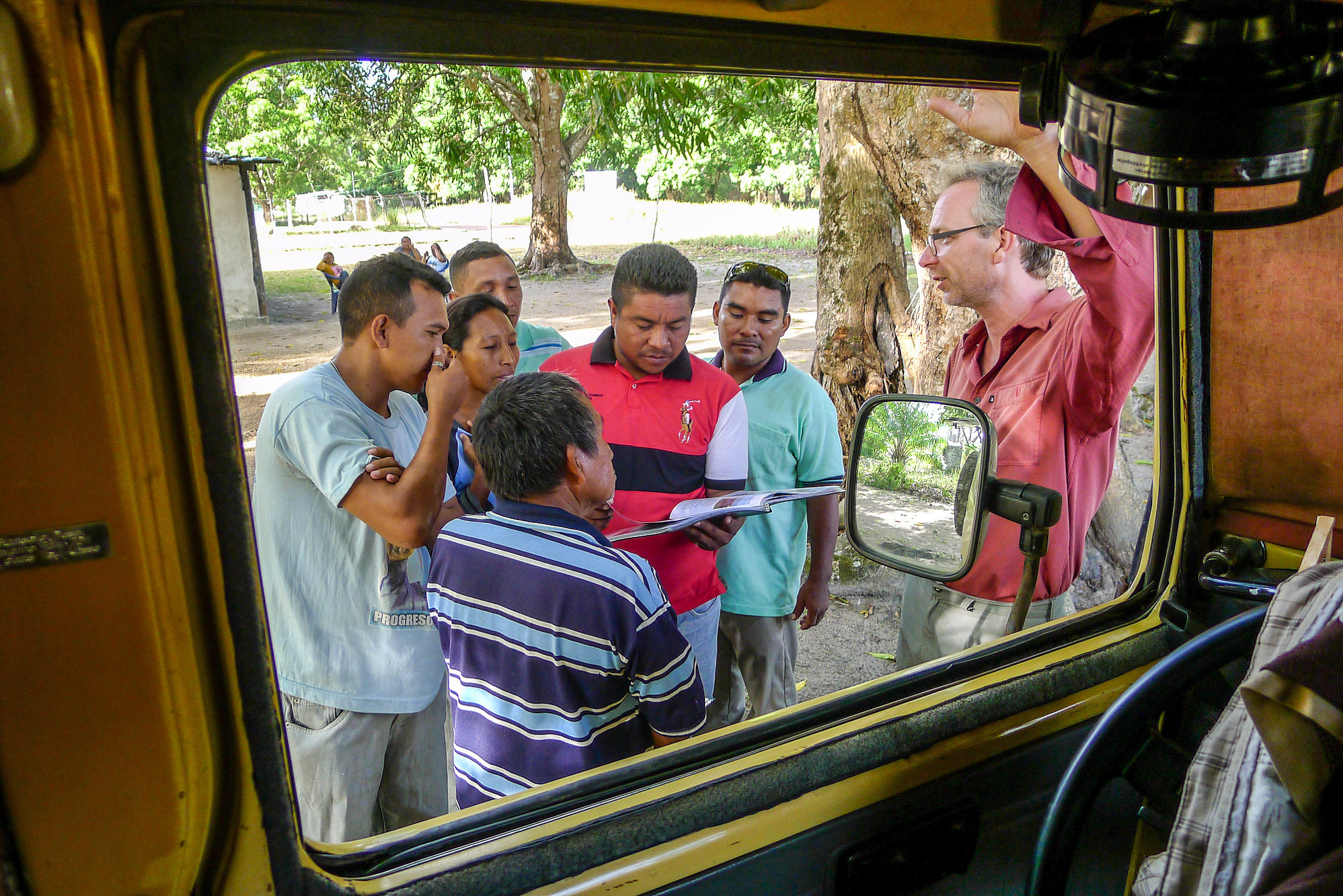
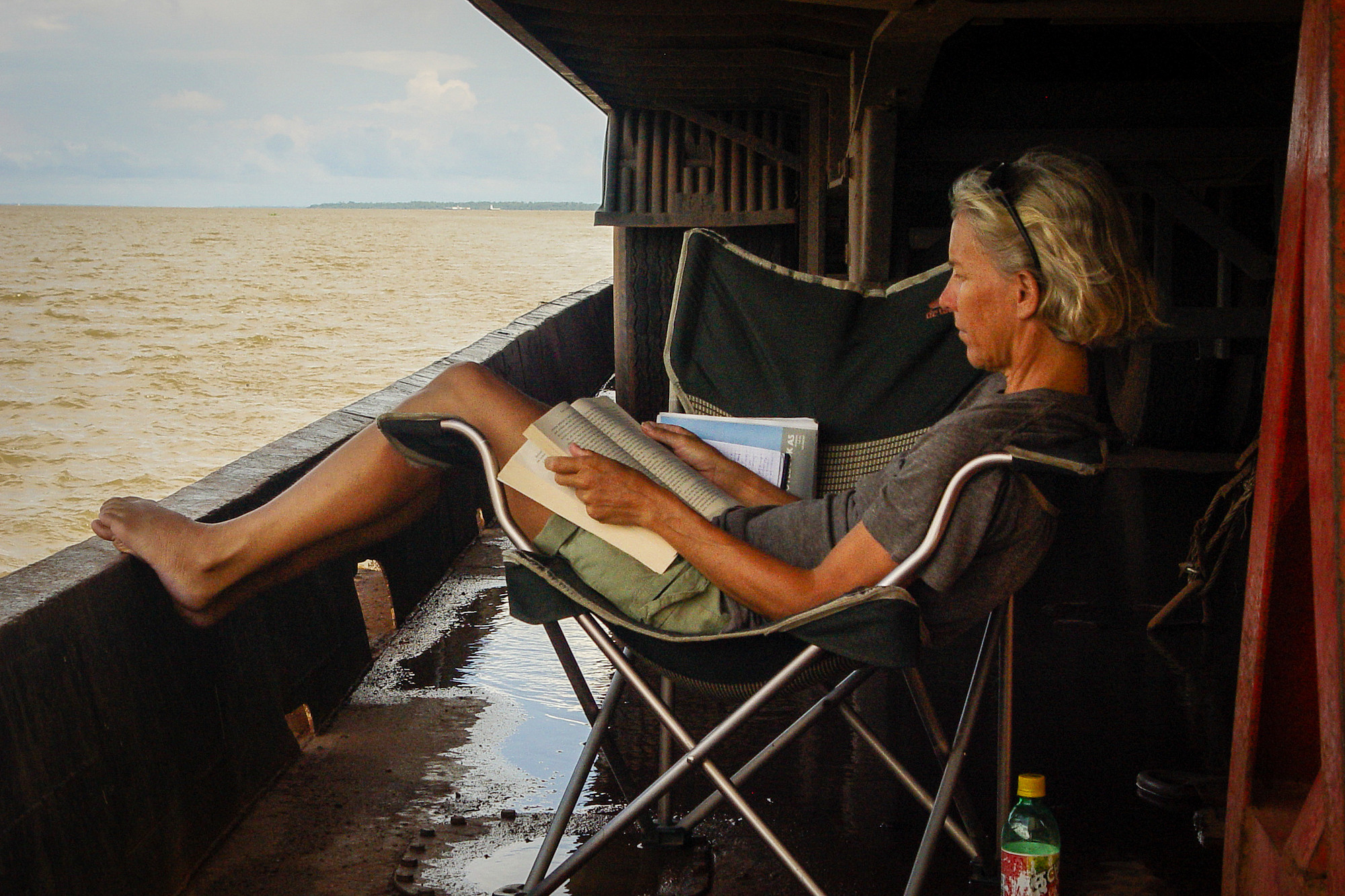
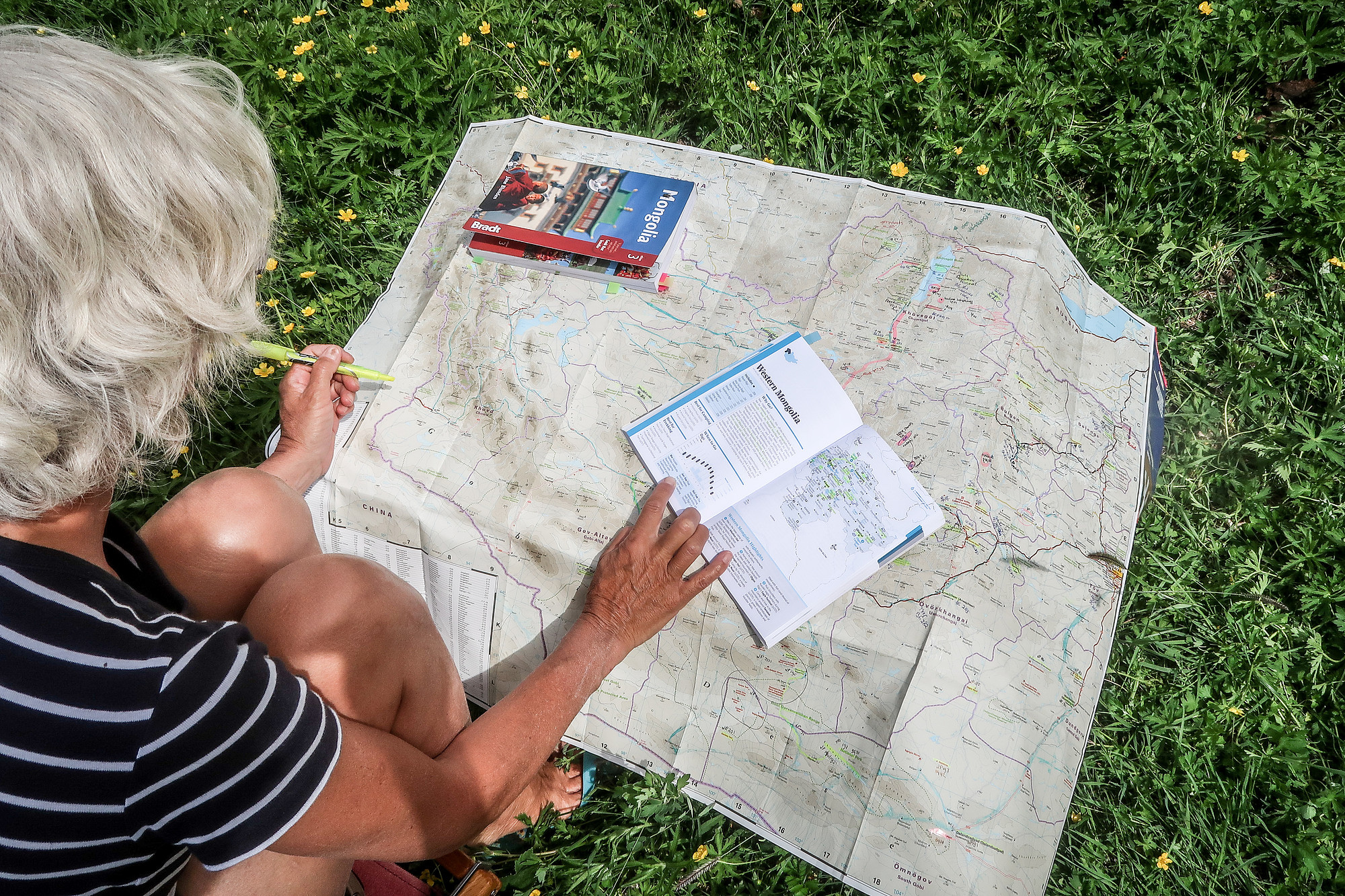
“Embracing” is taking it one step further than “respecting.” To respect each other’s characteristics is fundamental, which is not the same as understanding them. You don’t have to understand everything about your spouse; I even believe that may be a mission impossible.
4. Acknowledge pessimistic and optimistic moods.
Tip: Don’t expect the other to be in a good (or bad) mood just because you are.
During our 750-kilometer hike in South Korea, I had one of those days that I wondered why I had bothered getting up at all. I had no energy whatsoever and every step hurt. It rained, the forested mountains were obscured in dark-grey clouds. The steep, narrow tracks were so slippery that with two steps up we slid one step down. I was complaining but Coen wasn’t responding. I felt ignored and started an argument.
Coen responded, using few, very clear words, “It’s okay for you to feel down. Just don’t take me down with you.” That was such a wise remark and, fortunately, I acknowledged it. I fought my own struggle, Coen hiked on at his happy pace, quickly out of sight. At the top of the mountain, he dropped his backpack, turned around, went down, took mine, and hiked up once more. It gave me time to breathe, think, recover and find my smile back.
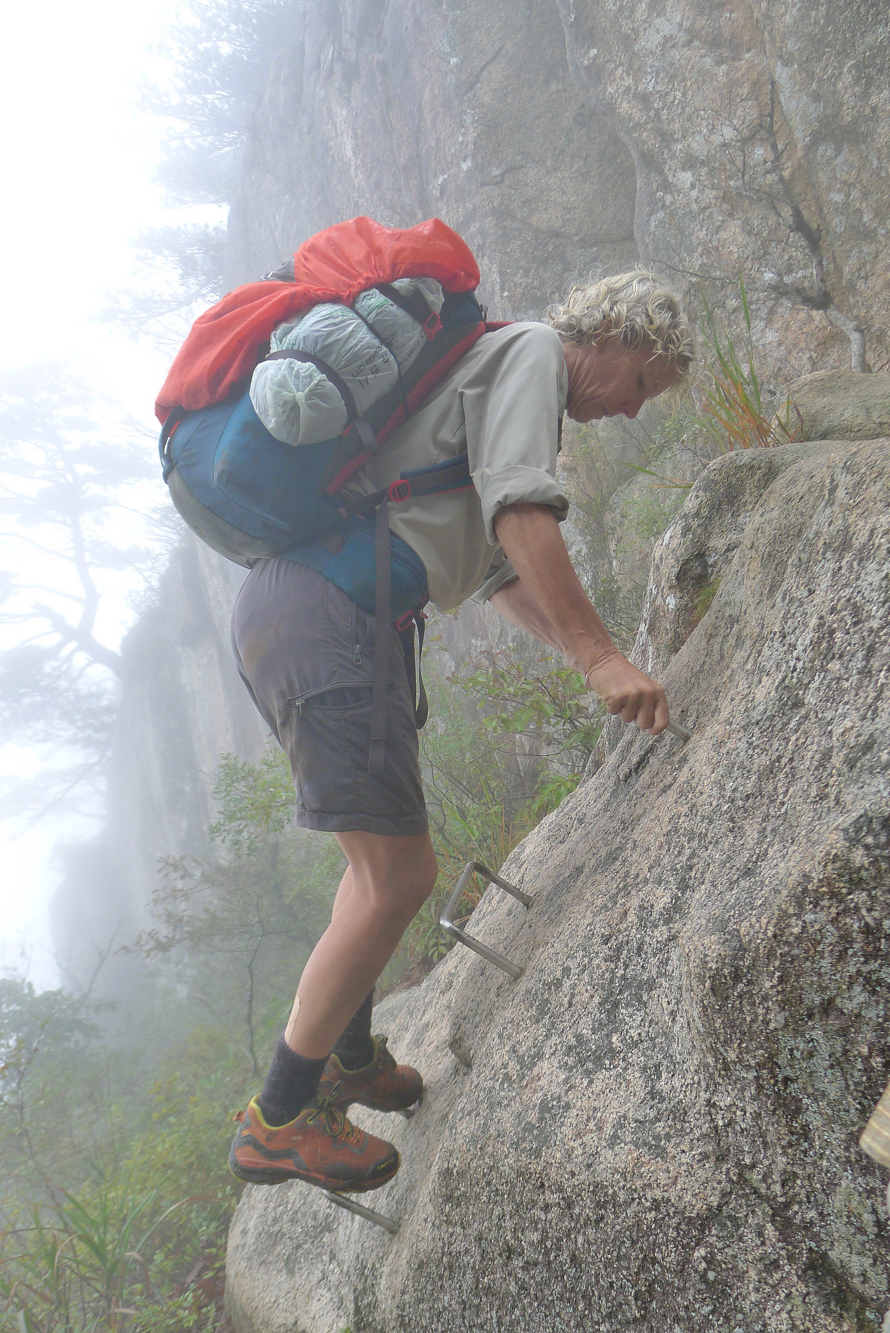
 At other times, Coen is the pessimist and I the optimistic one, taking the lead. Both moods are valuable in a relationship. They make sure that as a duo, there is a balance in being watchful (e.g. bringing up the “what if” in possibly dangerous situations) versus challenging yourself, leaving your comfort zone, and having an adventure.
At other times, Coen is the pessimist and I the optimistic one, taking the lead. Both moods are valuable in a relationship. They make sure that as a duo, there is a balance in being watchful (e.g. bringing up the “what if” in possibly dangerous situations) versus challenging yourself, leaving your comfort zone, and having an adventure.5. Live outdoors as much as possible.
Tip: Allow for some time in nature.
Driving, sightseeing, interacting with people are all part of overlanding and they are fascinating and rewarding. All of them are important aspects of our nomadic life. They are intense, too, and therefore we need quiet time. Lots of it. To digest, to rest, to regain energy.
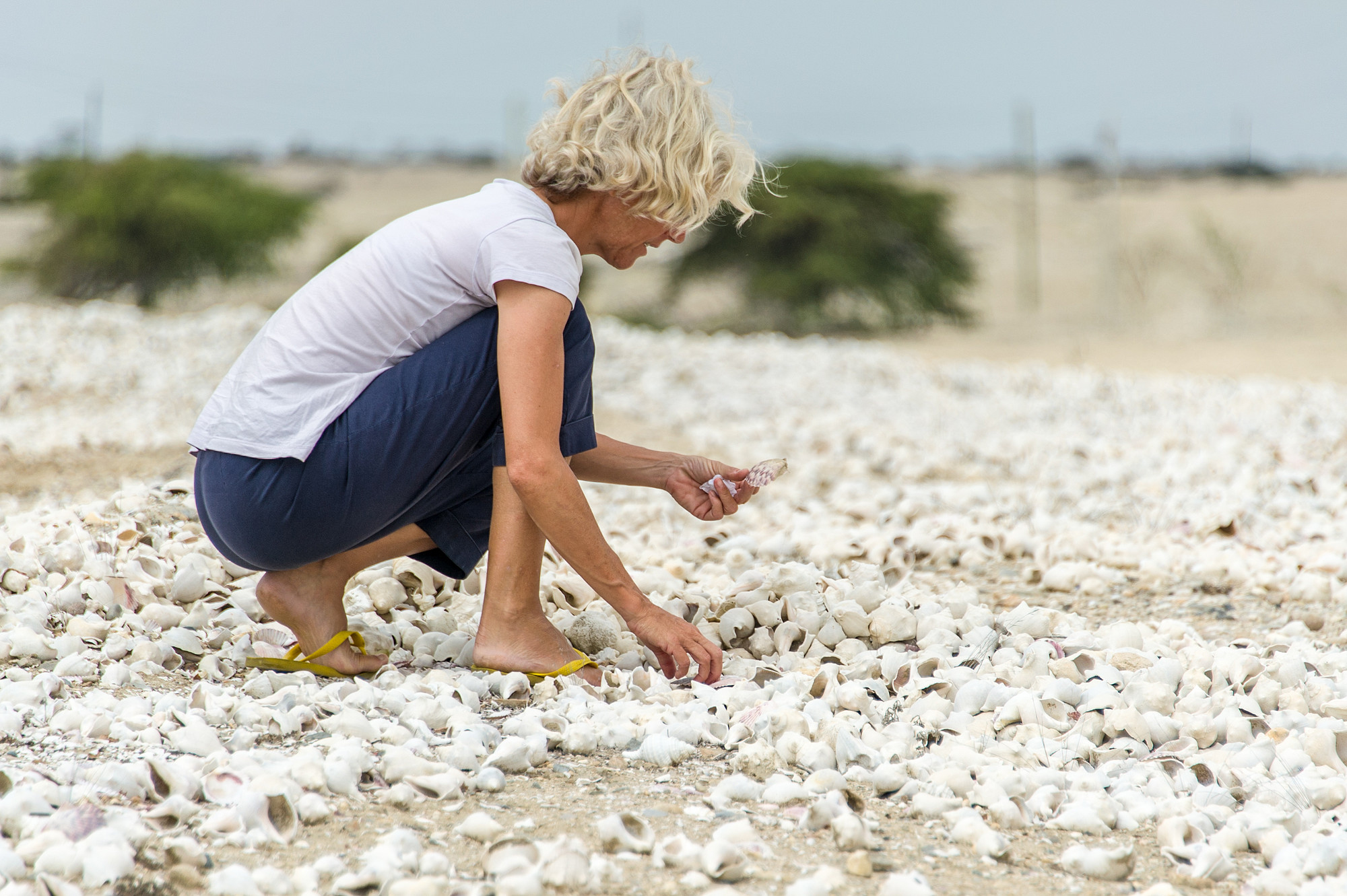
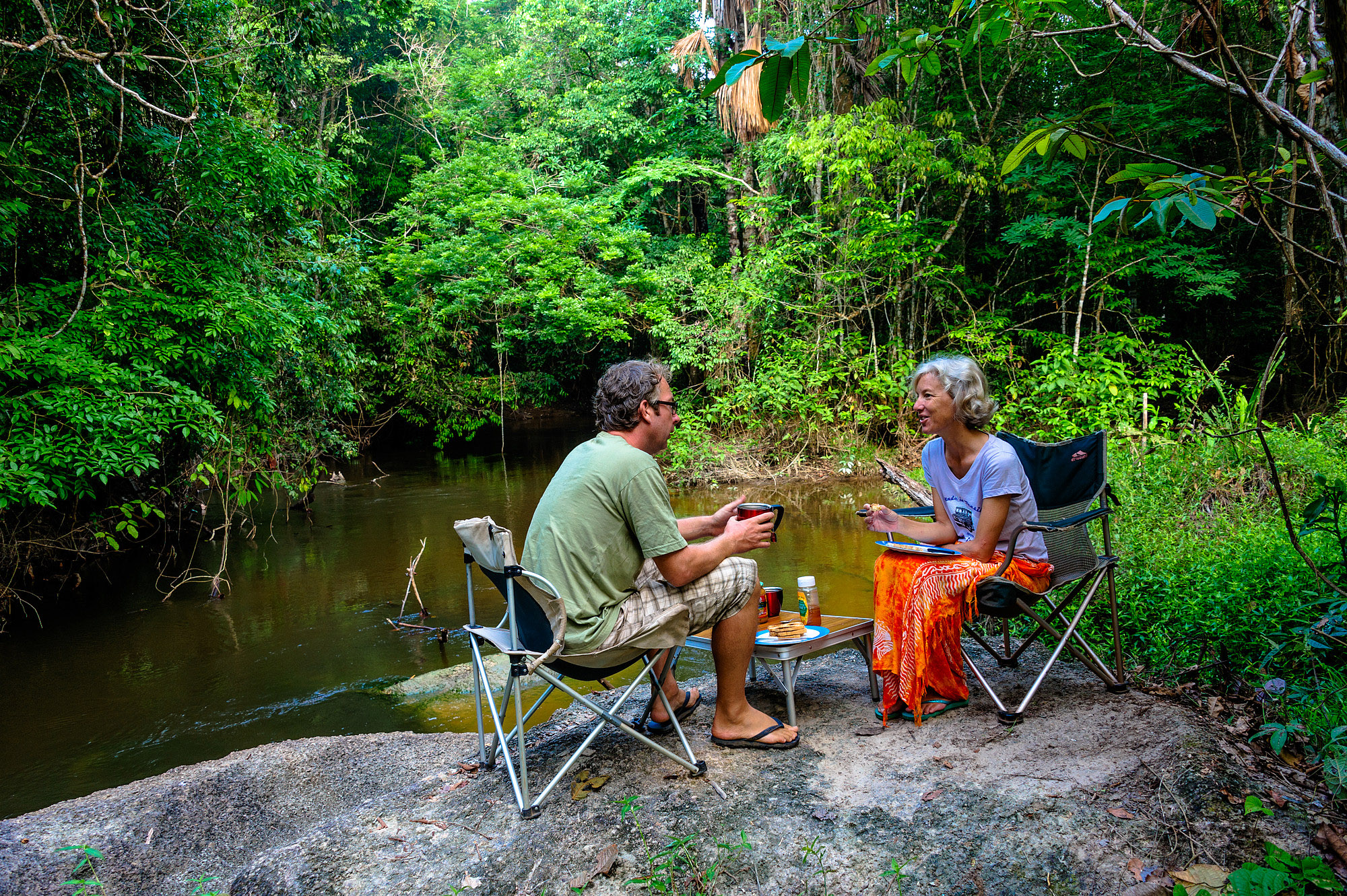 Overlanding gives you the most spacious home in the world: the outdoors. Rough camping and going deep into the wilderness, void of people, is a big part of our life. Here we feel free, breathe clean air, have all the space we want for ourselves. If the wilderness isn’t for you, opt for city parks, national parks, or just a big grassy field somewhere. In the outdoors, in the fresh air, we connect with ourselves as well as with nature.
Overlanding gives you the most spacious home in the world: the outdoors. Rough camping and going deep into the wilderness, void of people, is a big part of our life. Here we feel free, breathe clean air, have all the space we want for ourselves. If the wilderness isn’t for you, opt for city parks, national parks, or just a big grassy field somewhere. In the outdoors, in the fresh air, we connect with ourselves as well as with nature.
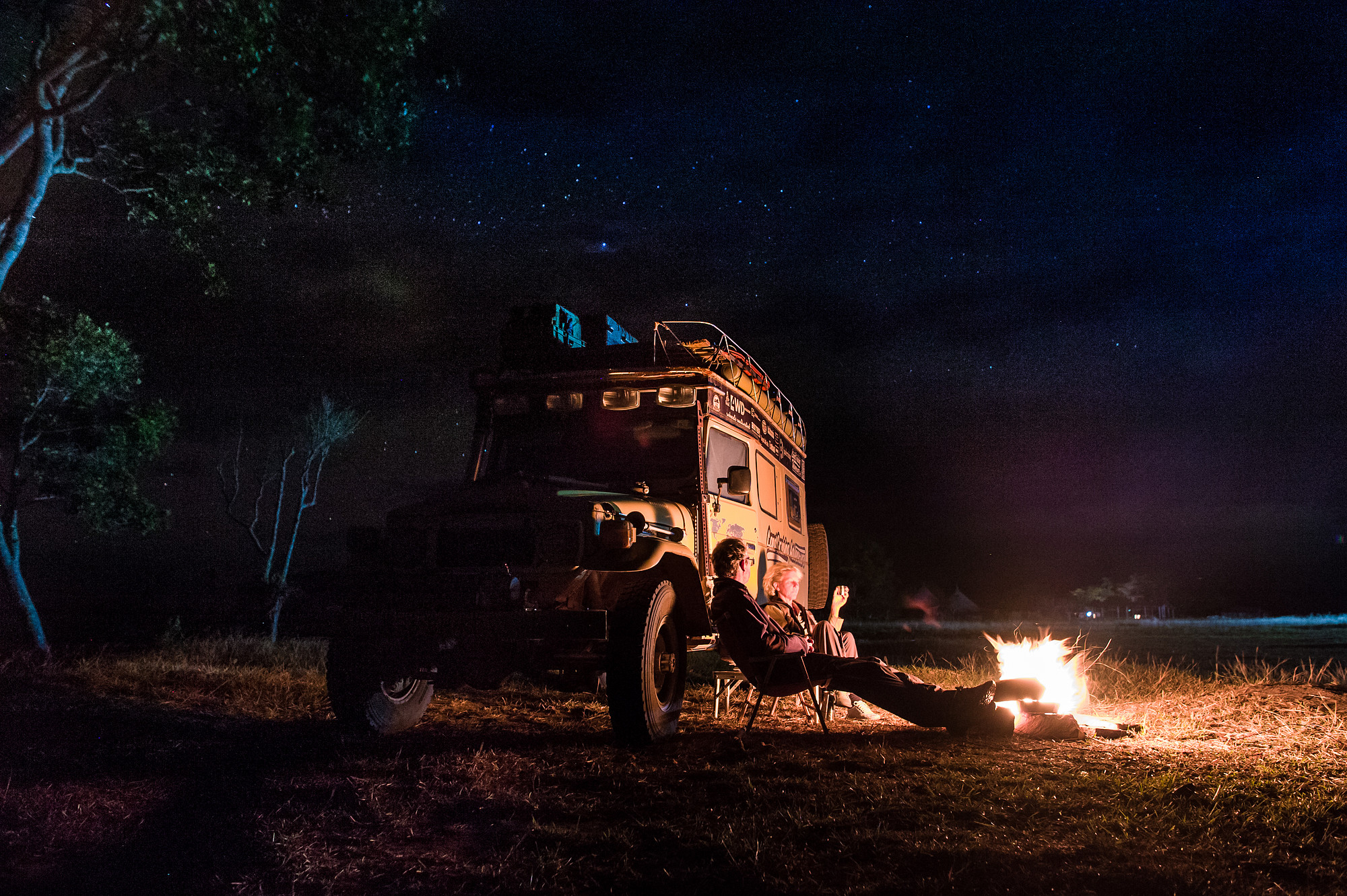
Here, far away from everybody and everything, we have our greatest adventures. It’s in the wilderness where we realize time and time again that we are the luckiest people in the world to live a life on the road.
6. Combine tip 1 and 5.
The most obvious one, I guess: Bring your hobbies and passions to the road. Go for a run, do yoga, bring your mountain bike, surf or SUP board— whatever makes you tick. Have adventures by yourself while enjoying the great outdoors.


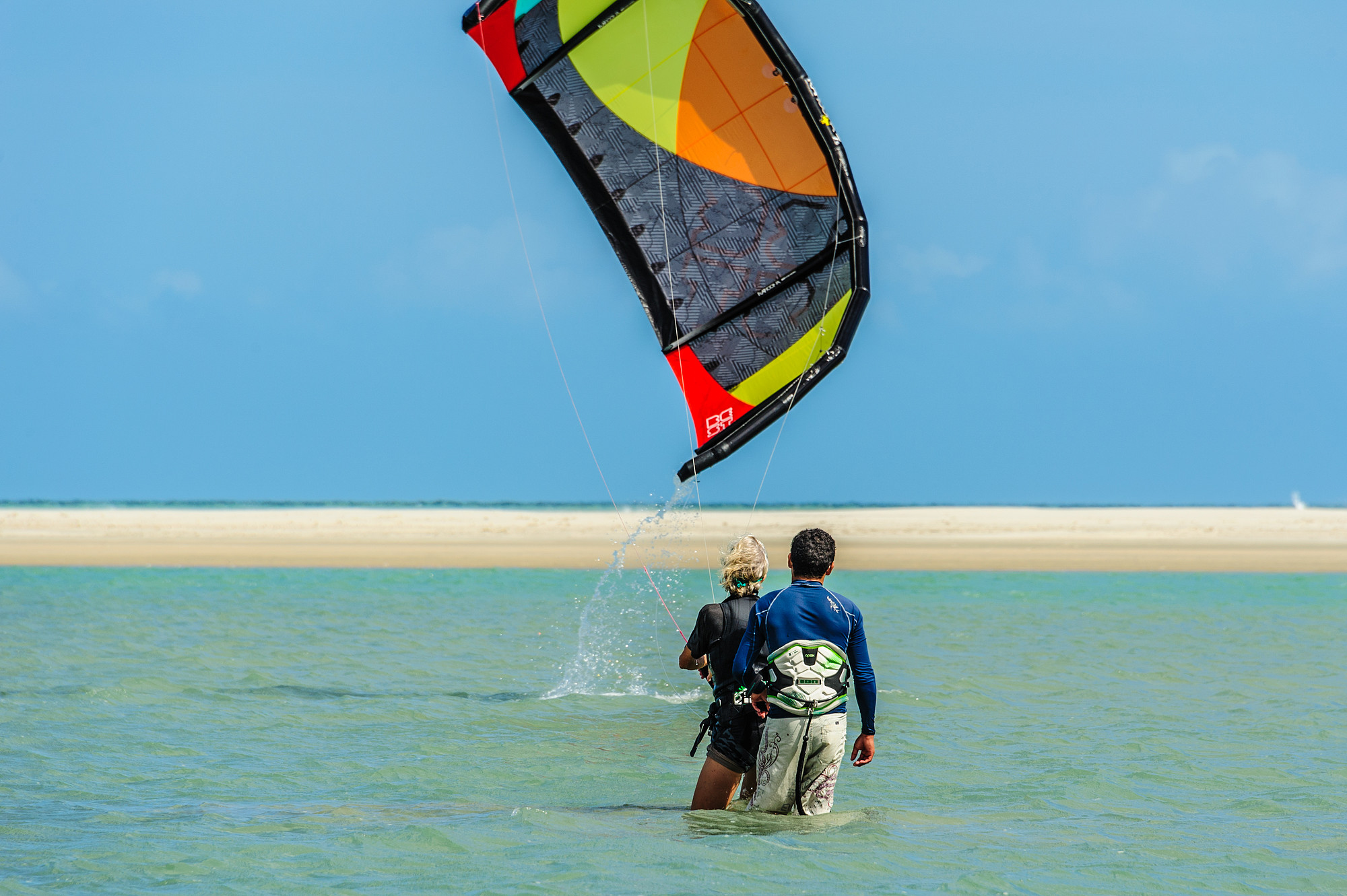
Which leaves me with one question: What are your tricks to stay sane when traveling together for a long period of time?
Tuesday, August 21, 2018
Monday, August 20, 2018
Sunday, August 19, 2018
Dufourspitze 4634m HB/VS-001 – Highest summit of Switzerland
View from the summit towards Dunantspitze
Dufourspitze 4634m (HB/VS-001), the culminating point of the Monte Rosa massif, is the highest summit of Switzerland, and the second-highest of the Alps and western Europe. After a long planning phase to find the right day with the right weather, and where we (HB9GIN, HB9FVF and HB9DQM) would all be able to get away from work, we succeeded with the first activation of this summit on Wednesday, 15 August 2018.
Preparation
In order to get acclimatised to the altitude, and as a small test of our rope team (first high mountain tour in this constellation, no mountain guide), we activated Breithorn 4164m (HB/VS-018) two days before on Monday, for lack of a better option given the weather conditions. Breithorn is one of the easiest 4000ers of the Alps, as it is located very close to the Klein Matterhorn aerial tramway top station at 3883m – the highest place one can reach in Europe by a means of transport (except for helicoptersHut
The base camp for the normal route to Dufourspitze is the Monte Rosa Hut, a remarkably high-tech hut built in 2009 and located at 2882m near Zermatt. Getting to the hut requires a 3-4 hour hike from the Rotenboden station of the Gornergrat railway, crossing the terminus of the Gorner Glacier.On the way to the hut
Monte Rosa Hut overlooking Gorner Glacier
We arrived at the hut on Tuesday afternoon. After a delicious dinner, we went to bed at 20:00 and tried to find some sleep.
Ascent
The normal route to Dufourspitze via the west ridge involves an ascent of 1880m from the hut, with grade II+ climbing on the exposed ridge. It is considered more difficult than the normal route to Mont Blanc. We got up at 02:00, had breakfast, and then set off in the dark as one out of six rope teams that day. First, we had to find our way through a confusing stone run between the hut and the Monte Rosa Glacier. Thanks to Matt’s preparation and route finding skills, we soon left the other rope teams behind, despite deliberately conserving our energy. Looking down, we could see their headlamps straying in all directionsAfter about an hour, we reached the glacier, roped up and put on our crampons. In the lower part, numerous crevasses had to be crossed/jumped over. While we were on the way to the col in the west ridge of the summit, the sun rose, creating a very special atmosphere in these high alpine surroundings.
We eventually reached the col, and after a quick break, started climbing the ridge. Care had to be taken as the ridge is exposed, and was partially covered with snow – there were plenty of opportunities to become SK by a slight mistake.
Two fun and easy parts of the ridge (for some reason nobody took out the camera while in the harder ones
After about 6.5 hours, we reached the summit in perfectly sunny weather, and admired the view down to all the lower mountains and valleys.
Activation
Using a KX2 with an MFJ whip for 40m + counterpoise wire, we started operating with the HB9SOTA club callsign, then switching operators so each of us would also get at least 4 QSOs on their personal callsign. Spotting proved to be difficult due to a flaky mobile phone signal, and after a false/old APRS spot with the reference of Breithorn, Iridium spotting through my Garmin inReach Mini saved the day. We could all feel the altitude affecting us, as the operating (especially in CW) wasn’t as straightforward and fluid as on lower summits. The chasers were numerous and well-behaved – thank you! Having made a total of 21 QSOs in half an hour, we decided to go QRT, as the descent was very long and had to be completed before the snow bridges over the crevasses in the lower part of the glacier got too soft.
Descent
We descended by the same way as we had come. The ridge again required full concentration and good use of rope and tools to secure the most critical sections. The rest was a rather uneventful slog down the glacier.Back at the hut, we had a drink, and then tackled the three-hour hike to the railway station. Tired but happy, we arrived back in Zermatt in the evening, where each of us went their own way.
If you’d like to see more photos, here’s a slideshow that Matt has put together:
Subscribe to:
Posts (Atom)
